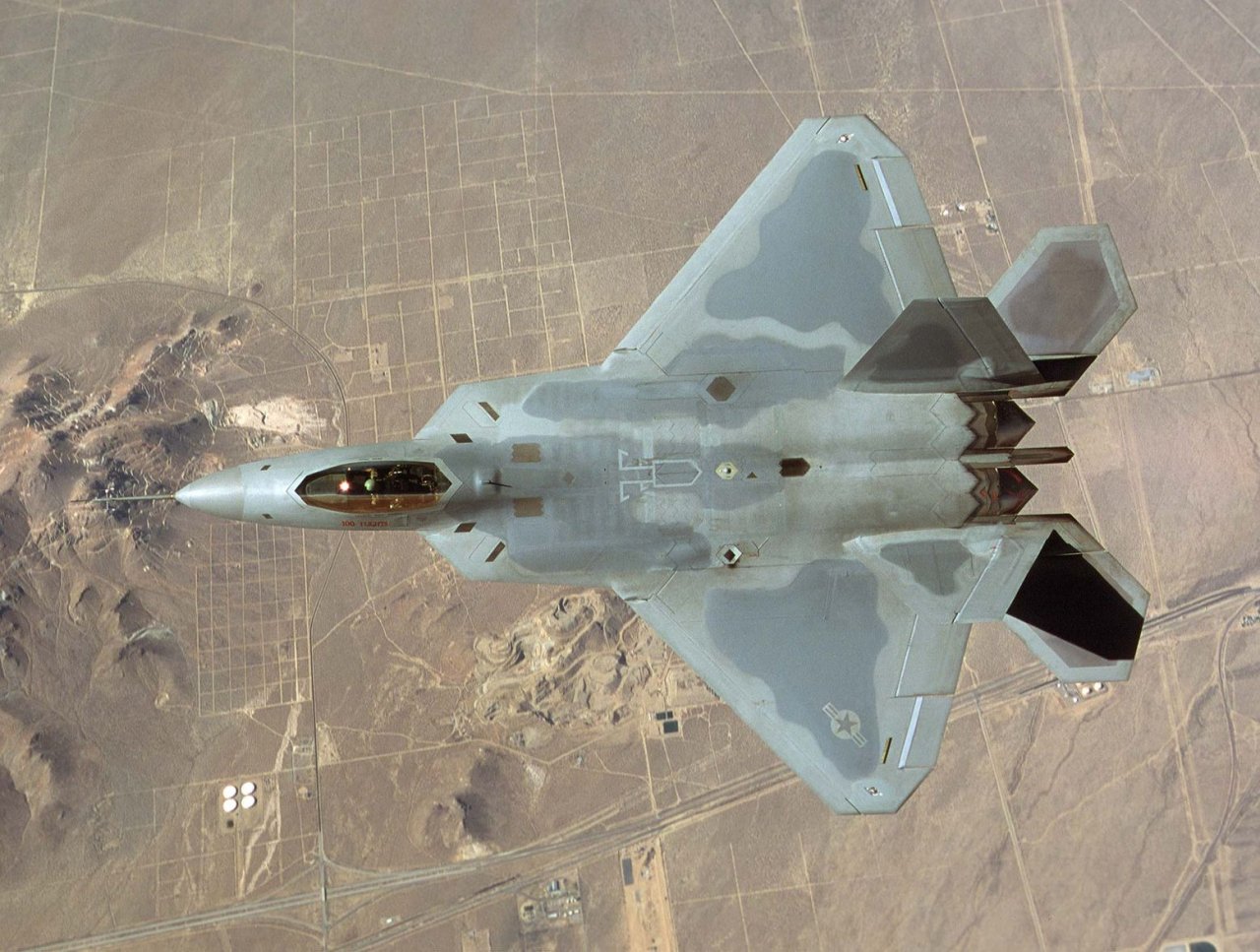
F-22s, F-35s, and B-52s: How America Deters Iran Every Day
A big task.
by David AxeKey point: These are high-tech weapons that Tehran cannot counter.
The U.S. Air Force on June 27, 2019 deployed F-22 Raptor stealth fighters for the first time to Qatar as part of a build-up of forces ahead of a possible clash with Iran.
The Air Force did not specify how many F-22s traveled to Qatar. Photographers spotted 12 of the radar-evading jets with “FF” tailcodes indicating they belong to the 1st Fighter Wing at Langley Air Force Base in Virginia.
The F-22s could fly alongside stealthy F-35s that the Air Force deployed to the United Arab Emirates in April 2019.
Raptors previously flew from the UAE for missions over the Persian Gulf, Syria and Iraq. But a readiness crisis in March 2019 compelled the Air Force to return the F-22s to the United States.
Since becoming operational in 2005, the F-22 has achieved roughly a 50-percent readiness rate, on average -- one of the lowest rates of all U.S. fighter types. The Raptor's complex systems and delicate, radar-absorbing coating require intensive maintenance.
Hurricane Michael didn't help. The October 2018 storm devastated Tyndall Air Force Base in Florida's panhandle region. Tyndall at the time housed two squadrons together flying 55 F-22s. the 43rd Fighter Squadron is a training unit. The 95th Fighter Squadron is a combat unit.
Tyndall airmen were able to fly out just 38 of the 55 Raptors prior to the storm. The remaining 17 jets -- nearly a tenth of all F-22s -- rode out the wind and rains in hangars. Some suffered damage.
The 187-strong F-22 fleet won’t meet the 80-percent readiness goal that former defense secretary Jim Mattis decreed before quitting the Defense Department in protest of Pres. Donald Trump’s foreign policy in January 2019.
Mattis had mandated all Air Force, U.S. Navy and U.S. Marine Corps F-15, F-16, F/A-18, F-22 and F-35 squadrons to achieve an 80-percent mission-capable rate by the end of September 2019.
In March 2019 then-Air Force secretary Heather Wilson warned that the F-22 force might fall short of the readiness goal. Three months later Air Force brigadier general Heath Collins, the service's program executive officer for fighters and bombers, made it official.
Despite the F-22’s readiness woes, the type remained capable of deploying. The 3rd Wing in Alaska in March 2019 managed to launch 24 of its 48 F-22 Raptor stealth fighters plus an E-3 radar plane and a C-17 transport, all in quick succession.
The “elephant walk” took place at Elmendorf Air Force Base during the Polar Force war game. "This two-week exercise gives squadrons an opportunity to demonstrate their abilities to forward-deploy and deliver overwhelming combat air power," the base stated.
The F-22s in Qatar are in position to strike Iran. Tension has worsened in the region after U.S. president Donald Trump withdrew the United States from the 2015 agreement limiting Iran’s nuclear program. The Pentagon in the summer of 2019 implicated Iran in several attacks on tanker vessels sailing near Iran.
On June 19, 2019, Iranian forces shot down a Navy surveillance drone over the Strait of Hormuz, the strategic chokepoint connecting the Persian Gulf to the open ocean.
Trump reportedly ordered retaliatory air and missile strikes then abruptly canceled them. He left open the possibility of a U.S. attack on Iran. “It wouldn’t last very long, I can tell you that,” Trump said in an interview on Fox Business.
“I’m not talking boots on the ground,” Trump added. “I’m not talking, we’re going to send a million soldiers. I’m just saying if something would happen, it wouldn’t last very long.”
The major forces already are in the region or available on short notice. In May 2019 the flying branch sent four B-52 bombers to Qatar to join the F-35s and other U.S. forces in the region.
The F-35s have flown combat missions over Iraq. The B-52s meanwhile have conducted show-of-force flights near Iran. If Trump ordered U.S. forces to strike Iran, the B-52s could lob cruise missiles at Iranian targets from hundreds of miles away while the F-35s flew closer to drop GPS- and laser-guided bombs.
B-2 stealth bombers currently at their home base in Missouri could fly across the Atlantic Ocean to join the air campaign.
The aircraft carrier USS Abraham Lincoln as of June 26, 2019 was in the Persian Gulf region with one cruiser and four destroyers as escorts. While Lincoln’s 40 F/A-18E/F fighters could contribute to strikes on Iran, their lack of stealth could expose them to Iranian defenses.
The escorts in Lincoln’s battle group all can carry Tomahawk cruise missiles. Trump twice in his presidency has ordered Navy warships to conduct limited missiles strikes, both times targeting Syria’s chemical-weapons infrastructure.
Iran isn’t defenseless against U.S. air raids, as its shoot-down of a Navy drone proved. The Iranian armed forces and the Iranian Revolutionary Guard Corps militia operate Russian-made S-200 and S-300 air-defense systems as well as hundreds of fighters including dozens of modernized F-14s that Iran acquired from the United States in the 1970s.
If the F-22s were to perform the same role over Iran that they did over Syria and Iraq, they could both screen other forces from enemy aircraft as well as drop their own GPS-guided bombs to clear a path through enemy air defenses.
Image: Reuters.
(This first appeared in June 2019.)